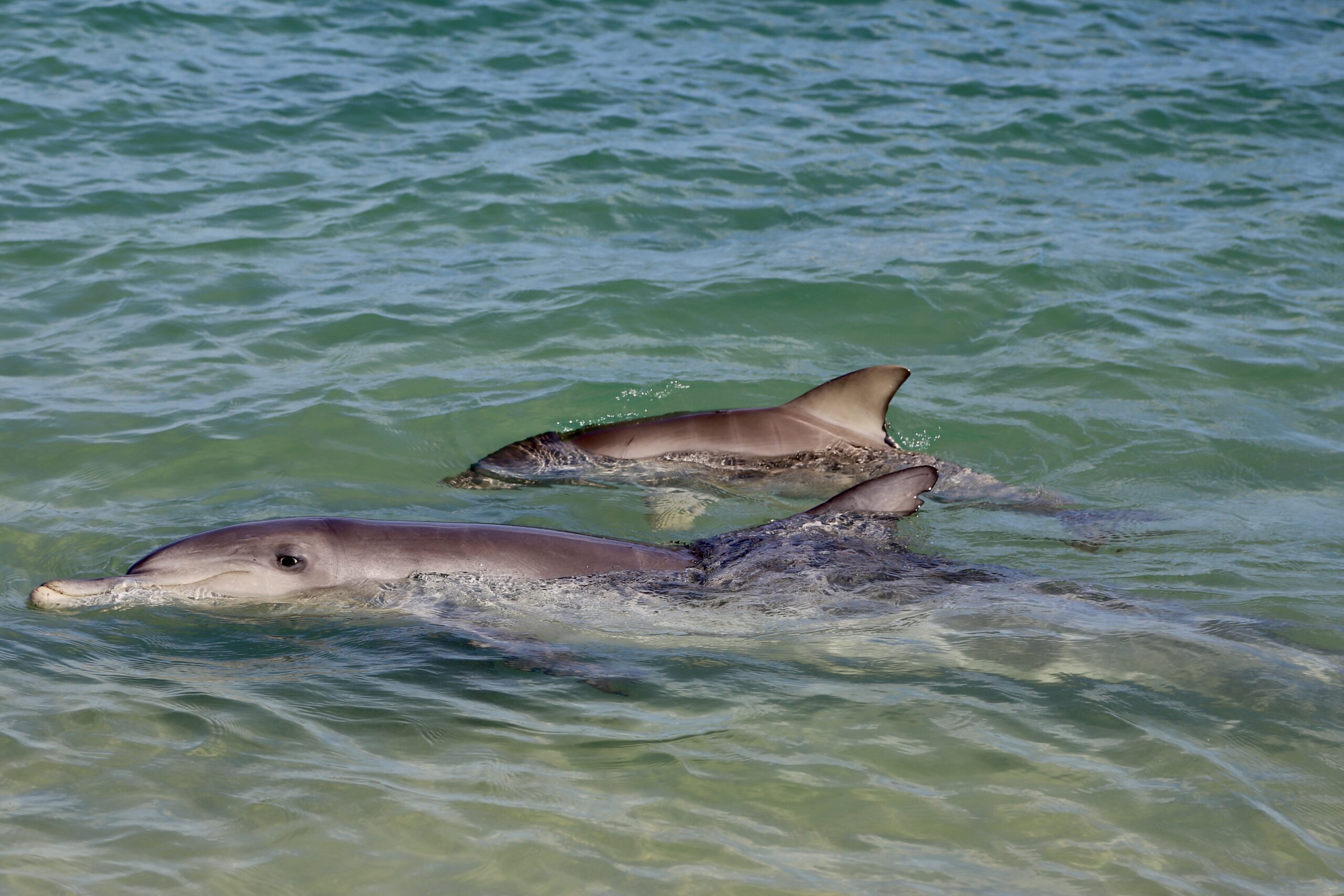Our speaker was Darren Hamley, a multi-award-winning science teacher, environmentalist and wildlife rehabilitator. Darren teaches science to children in the Gifted and Talented Program at Willetton Senior High School, where he can give them some exciting extension work. He has them doing “proper” research – that is, starting with the collection of raw data rather than research from the internet. And their subject is the Indo-Pacific Bottlenose Dolphin.
Darren surprised many of us with the fact that dolphins don’t move around in family groups, as whales do, but in all-female “parties” and all-male “alliances”. The calves stay with the females, and there is a very strong mother-to-calf bond.
Males sometimes leave their alliance and join others. A male alliance will take a female from a party, and they will all mate with her. This may sound callous, but it is easy to anthropomorphise. It has the effect of increasing genetic diversity. While the behaviour of most mammals is determined mainly by reproduction, food and fear, dolphins’ behaviour has another aspect – play. For example, they may swim on their back or throw fish in the air. But Darren says they live hard lives. There are fights between males, and there are shark attacks.
The dolphins eat 10 to 12 kg of fish a day. Sometimes they tail-slap to stun the fish, and sometimes they use a sponge to rummage on the sea floor, stirring up shellfish and other morsels.

People started feeding dolphins at Monkey Mia in the 1960s. But later, it noticed that their calves were dying. It turned out that some females stayed in shallow water for the fish handouts, making it impossible for their calves to suckle. So new rules were established, with a set number of fish and a set time for feeding.
Darren’s students researched echolocation. They had hydrophones attached to their ankles. The research yielded very little until it noticed that the frequency increased to a spike when fish were thrown at them. This suggests that perhaps the frequency varies with the dolphin’s state of excitement. Again, we should be careful not to anthropomorphise, but it does seem to reflect their emotional state.

Another area of research for the students was hydrodynamics. Fights and other bites can damage dorsal fins. But it was found that damage can also be done by entanglement in fishing lines that can gradually cut through the fin. Using laboratory models, the students found that fin damage can slow swimming speed.
The students also produced a Dolphin Fin Guide so that people could identify the individual dolphins by name at Monkey Mia. A future project might be to develop a technique to find the gender of calves. Another is to discover how far their echolocation signals travel. The students are very lucky to have Darren as their teacher to extend their knowledge and skills in such a fascinating field of study.
Mike Gregson


